 |
|
| plants text index | photo index |
| coastal plants |
| Bonduc Caesalpinia bonduc Family Fabacea updated Oct 2016 Where seen? This rare prickly plant is only seen in Pulau Semakau, Lazarus Island and Pulau Senang. According to Hsuan Keng, it was found near the sea in bushes. According to Tomlinson, it is aldo found inland in secondary forests up to an altitude of 850m. According to Giesen, it is recorded throughout Southeast Asia but is scarce in Sumatra, Borneo and the Philippines. Elsewhere, it is also called the Grey nicker bean plant, refering to the seeds. Features: A coarse climbing vine (5-15m long) to a prickly shrub. The compound leaf is bipinnate, i.e., resembles a feather, with 12-24 leaflets (2-4cm long) arranged on side branches on a main leaf branch. The entire compound leaf is up to 1m long. The plant is armed with hooked prickles. Flowers in a cluster (up to 50cmm long) yellow with reddish streaks. Flowers are of one sex only. The fruit pods (6-9cm long) armed with numerous rigid spines. The fruit splits open when ripe to reveal 1-2 seeds which are oval, smooth and grey. Sometimes mistaken for Maiden's jealousy (Tristellateia australasiae) especially when in bloom. Human uses: According to Giesen, root is used to treat stomach aches and to stimulate the appetite. Status and threats: This tree is listed as 'Critically Endangered' in the Red List of threatened plants of Singapore. |
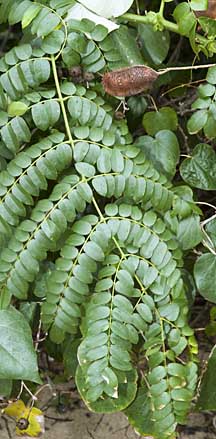 Pulau Semakau, Dec 08 |
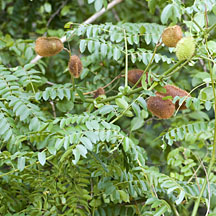 Pulau Semakau, Feb 12 |
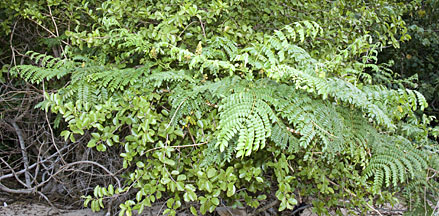 Pulau Semakau, Oct 11 |
|
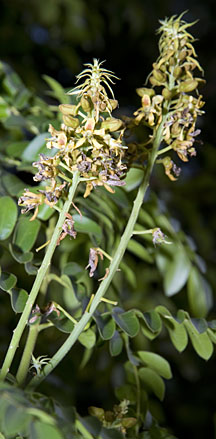 Pulau Semakau, Nov 11 |
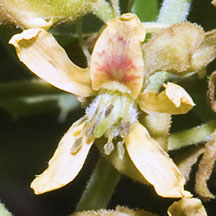 Pulau Semakau, Nov 11 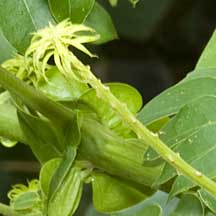 Developing flowers. Pulau Semakau, Dec 08 |
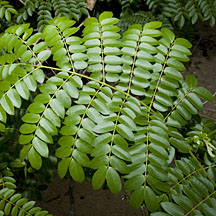 Pulau Semakau, Nov 11 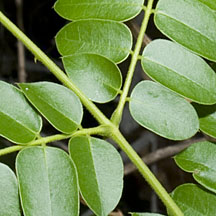 |
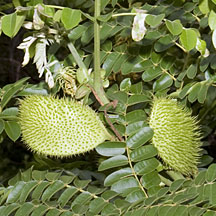 Pulau Semakau, Nov 11 |
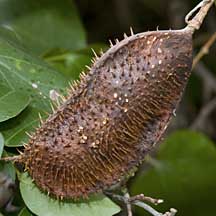 Pulau Semakau, Dec 08 |
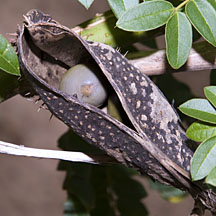 Pulau Semakau, Nov 11 |
| Bonduc on Singapore shores |
| Photos of Bonduc for free download from wildsingapore flickr |
| Distribution in Singapore on this wildsingapore flickr map |
|
Links
References
|
|
|